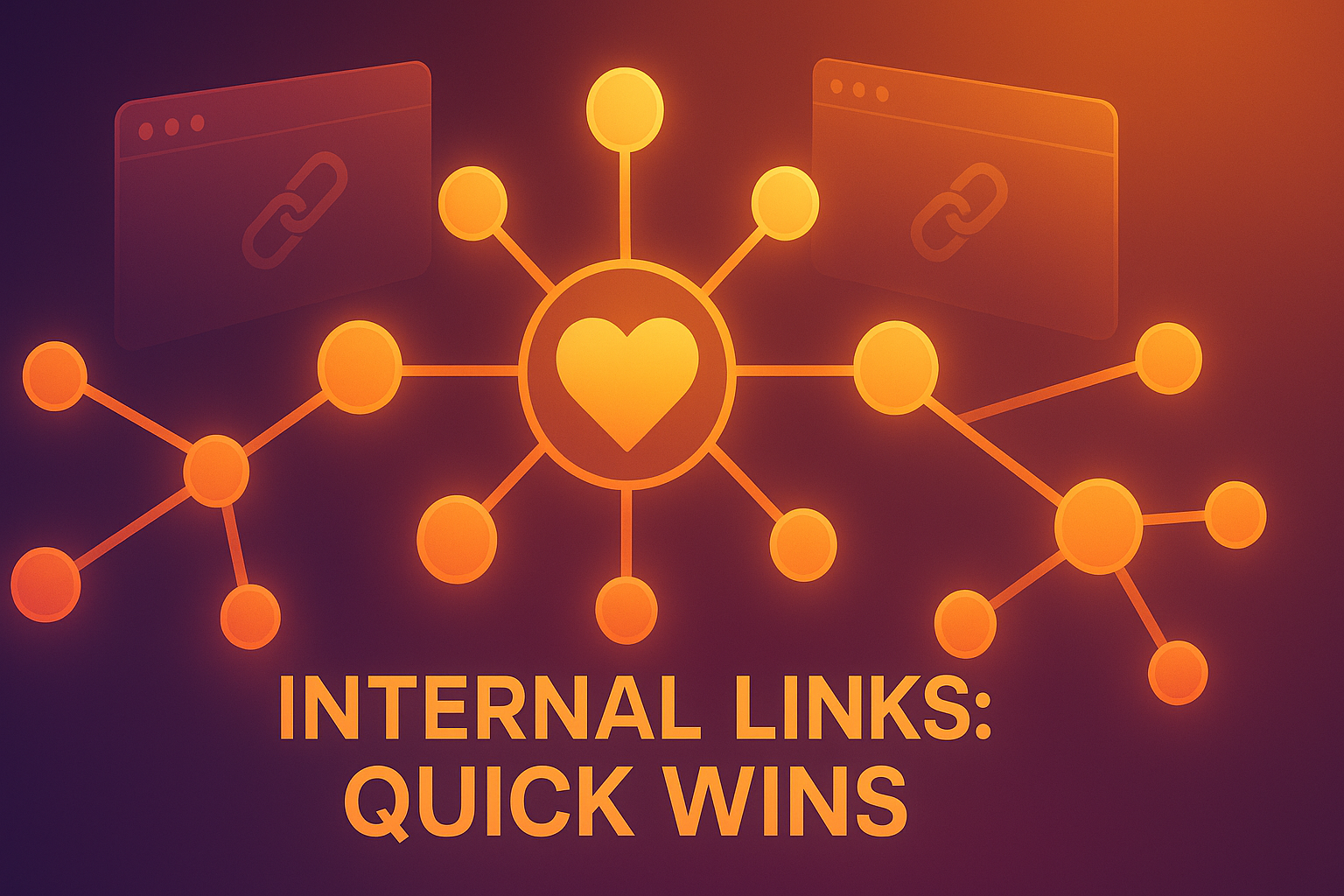Simple, high-impact internal linking tactics any nonprofit team can implement—no coding, no plugins. Includes quick checklists and how to track impact in SEO Horizan.
Non-technical: internal links quick wins for nonprofits
If your best stories and program pages are hard to reach, donors and volunteers won’t find them—and search engines won’t rank them. This playbook gives you non-technical internal linking wins you can ship in minutes using SEO Horizan and simple CMS edits—no code, no plugins.
What counts as an “internal link issue” in 2025?
- Orphan pages: Important pages (Donate, Volunteer, Programs, Impact) have few or zero incoming links.
- Generic anchors: “Click here” or “Read more” instead of descriptive phrases a supporter understands.
- Weak hubs: “About” or “Impact” pages don’t route to priority programs and recent stories.
- Redirect hops: Links point to URLs that 301/302 before the final page.
- Thin link blocks: Long posts end with no next steps or related content.
Why internal links matter for nonprofits
- Mission amplification: Pushes authority from your most linked press pages to program pages that need visibility.
- Frictionless journeys: Converts awareness into action (donate, volunteer, attend) without dead ends.
- Faster indexing: Linked pages are discovered and refreshed more often.
- Accessibility & clarity: Descriptive anchors help all readers—including screen-reader users.
How to improve internal links with SEO Horizan (10–30 minutes)
Run this lightweight workflow weekly or before campaigns.
Step 1: Find anchor opportunities fast
- Open Website Text Extractor and paste a top-traffic article URL. Scan repeated nouns/verbs (e.g., “school meals”, “shelter kits”). These become natural anchors.
- Open the destination page in a new tab and check clarity with Meta Tags Checker and OpenGraph Checker.
Goal: Gather 3–5 strong, descriptive anchors per page.
Step 2: Add contextual links (2–3 per top page)
- Place links inside paragraphs—near the claim or stat they support.
- Use anchors supporters would say out loud (e.g., “donate to winter shelters”).
- End the article with a small “Next steps” box: Donate • Volunteer • Related Program • Related Story.
Step 3: Turn “About” and “Impact” into link hubs
- Add sections: “How to get involved”, “Our programs”, “Latest stories”.
- Link 4–8 key pages from each section (prioritize Donate/Volunteer + top programs).
Step 4: Rescue orphans
- Create a “Programs index” page listing every program with a 1–2 sentence blurb and a link.
- From 3–5 relevant posts, add a contextual link to each orphaned program page.
Step 5: Verify no redirect hops
- Check each new link with URL Redirect Checker. Ensure it goes straight to a 200 page (no extra hops).
- If there’s a hop, update the link to the final URL and confirm headers in HTTP Headers Lookup.
Step 6: Make image links meaningful
- If an image tiles to a page, its
altshould describe the destination (e.g., “Donate to emergency shelter fund”). Validate with Image Alt Tags Checker.
Step 7: Keep thin pages useful
- Add a 1–2 sentence intro and 3–5 internal links to strong hubs.
- Optionally confirm basics with Text to HTML Ratio Checker.
Copy-and-paste internal link templates
Mini CTA block (end of posts)
<aside class="cta">
<h3>Take action</h3>
<ul>
<li><a href="/donate">Donate to [Program/Region]</a></li>
<li><a href="/volunteer">Volunteer or join an event</a></li>
<li><a href="/programs/[program]">About this program</a></li>
<li><a href="/blog/[related-story]">Related story</a></li>
</ul>
</aside>
Related stories block
<aside class="related">
<h3>Related stories</h3>
<ul>
<li><a href="/blog/[impact-story-1]">[Story title]</a></li>
<li><a href="/blog/[impact-story-2]">[Story title]</a></li>
<li><a href="/programs/[program]">About this program</a></li>
</ul>
</aside>
Prioritization (quick matrix)
Page, Role, Needed links, Priority
/about, Hub, Donate • Volunteer • 4 programs • 3 stories, Do Now
/impact, Hub, 6 stories • 3 programs • Donate, Do Now
/blog/[top-post], Sender, Donate • Program hub • Related story, Quick Win
/programs/[orphan], Receiver, From 3 related posts • From Programs index, Plan
Publishing checklist (don’t skip)
- ✅ Each new link points directly to a final 200 (verified via URL Redirect Checker).
- ✅ Anchor text is specific and human (no “click here”).
- ✅ About/Impact act as hubs with 4–8 links each to Donate, Volunteer, Programs, and Stories.
- ✅ Orphan programs receive at least three incoming links.
- ✅ Image links use meaningful
alttext (confirmed with Image Alt Tags Checker). - ✅ Thin pages provide 3–5 links to hubs or deep content.
Where to place internal links
- Global hubs: About, Impact, Programs index, Blog hub.
- High-intent: Donate, Volunteer/Join, Event pages.
- Story to program: Each impact story links to the most relevant program page.
- Footer safety net: Donate • Volunteer • Programs • Contact • Sitemap.
SEO Horizan Toolbox (to move faster)
- Website Text Extractor • Meta Tags Checker • OpenGraph Checker
- URL Redirect Checker • HTTP Headers Lookup
- Text to HTML Ratio Checker • TTFB Checker • Website Page Size Checker
FAQs
How many internal links should a nonprofit page have?
Prioritize relevance over volume. For 800–1,200-word pages, aim for 3–8 contextual links plus one clear CTA (donate/volunteer).
Do footer links count?
Yes, but contextual links inside the content carry stronger topical signals. Use both.
Should I update old posts or just new ones?
Start with your 10 most-read posts. Add three links each: Donate/Volunteer, a Program hub, and a related story.
What if a linked URL redirects?
Update the anchor to the final destination and confirm with URL Redirect Checker.
Wrap-up
Internal links are the fastest, lowest-cost SEO lever for nonprofits. Extract natural anchors, wire them to your mission-critical pages, remove redirect hops, and publish small CTA blocks everywhere. Want to operationalize this with audits and quick checks? Sign up or compare Plans.
